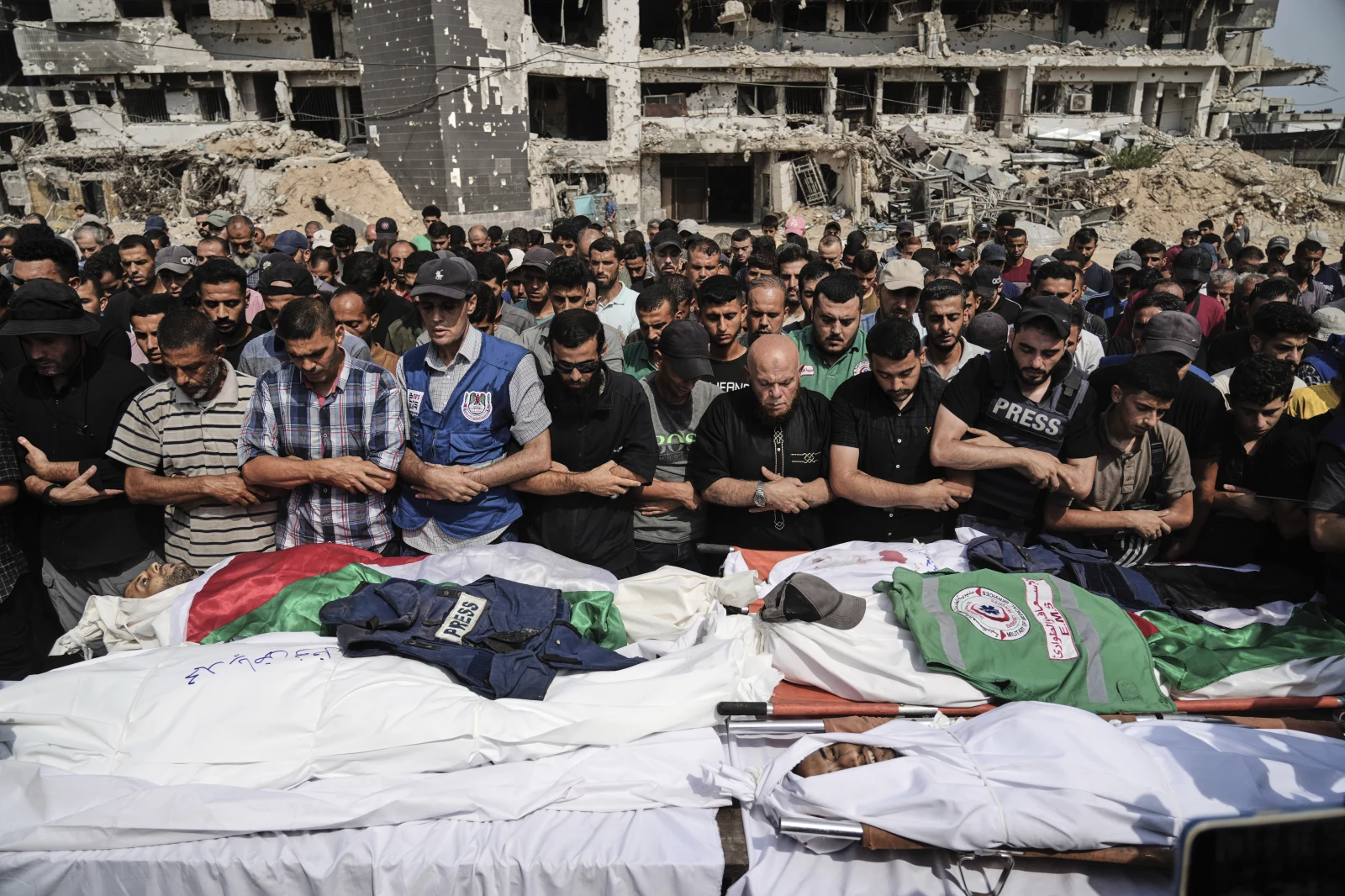
Palestinian mourners gather to pay their final respect and pray for Al Jazeera correspondents Anas al-Sharif and Mohamed Qreiqeh, at their funeral held on Monday, August 11, 2025. Image Credit: AP Photo/Jehad Alshrafi
(The Post News) – The recent targeted killing of two Al Jazeera correspondents, in addition to the 184 Palestinian journalists killed by Israel’s military, has spotlighted the extreme challenges and dangers journalists face in Gaza.
A couple of months into the Israel-Palestine conflict, the Israeli military barred foreign journalists from reporting on the ground in Gaza. The military would only allow limited and highly controlled access. Therefore, news organisations heavily relied on Palestinian journalists to tell the story of the atrocities happening in Gaza.
These journalists and occasional dispatches described the hunger, malnutrition and constant danger they documented and experienced.
Jane Ferguson, a seasoned war correspondent with coverage from South Sudan, Syria and Afghanistan wars, applauds and recognises the dedication it takes. She says, “You simply are in awe when stories show up,”. She also notes that this conflict has been the most challenging to cover due to the restrictions and fatalities.
Israeli forces have now killed nearly 240 journalists, when accounting 184 Palestinian reporters and those in the 10 August drone attack.
On this past Sunday, Israeli forces fatally wounded Al Jazeera correspondents Anas al-Sharif and Mohammed Qreiqeh, along with five other media workers. They struck six journalists and an assistant as the group camped in a tent near Gaza City’s Al-Shifa Hospital.
Five of the journalists were from Al Jazeera, which has been at the forefront of Gaza coverage. The Committee to Protect Journalists (CPJ) estimates that Al Jazeera has had the highest death toll from any single organisation. With this attack, the death toll of Al Jazeera journalists covering atrocities in Gaza has now doubled.
The news organisation has condemned and already has plans in place to continue covering the conflict. Because dispatching journalists is difficult, the organisation is seeking help from other outlets. Al Jazeera plans to collaborate with the trained and educated journalists who are still in Palestine.
Al Jazeera led thousands of journalists, news outlets, and human rights groups in condemning the attack on journalists. They called attack a “desperate attempt” at silencing the voices of journalists reporting on Gaza’s occupation and seizure.
The South African National Editors’ Forum (SANEF) has emphasised the importance of protecting journalists as reporters of the truth. Southern African Freelancers’ Association (Safrea) echoed the same sentiment.
CPJ has Regional Director Sara Qudah explicitly accused Israel of being a murder of the messengers. While reporting in war zones is inherently risky, as seen with the 18 journalists killed in the Russia-Ukraine conflict, deliberately targeting and killing journalists is unlawful. Qudah described this act as “plain and simple” murder.
After the drone attack, journalists and news agencies demanded immediate, unrestricted access for foreign journalists to Gaza. In the past three days the “Freedom to Report” initiative was signed by over 1,000 media professionals from 60 countries.
Please share your thoughts; contact Lukhona via email: journalist-lukhona@thepostnews.net.



